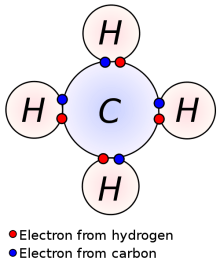Scientists Crack Methane’s Bonds, Make it More Reactive
 We commonly think of methane as being nothing more than a convenient fule source, recent extraction issues not withstanding. To chemists, however, methane is held in high regard for its potential for constructing complex biological compounds. Since it consists of single carbon atom with four hydrogen, it is the simplest of hydrocarbons and a useful starting point from which to build. Unfortunately, methane is reluctant to react because those hydrogen-carbon bonds are so strong. Scientists have managed to make methane more reactive by breaking one of those bonds, but doing so has traditionally requires high heat and dangerous acids.
We commonly think of methane as being nothing more than a convenient fule source, recent extraction issues not withstanding. To chemists, however, methane is held in high regard for its potential for constructing complex biological compounds. Since it consists of single carbon atom with four hydrogen, it is the simplest of hydrocarbons and a useful starting point from which to build. Unfortunately, methane is reluctant to react because those hydrogen-carbon bonds are so strong. Scientists have managed to make methane more reactive by breaking one of those bonds, but doing so has traditionally requires high heat and dangerous acids.
This was the case until Pedro Perez at Spain’s University of Huelva presented his team’s research, which made methane react without acid and at a mere 40º C. Perez’s approached mixed the methane with super-critical carbon dioxide. In the super-critical form, the CO2 is neither gas nor liqud, and mixed will with the other chemicals in the reaction. With the addition of a silver-based catalyst the reaction proceeded and was successful.
Perez’s work hods a two-fold benefit. First, using methane in reactions could lead to the improved manufacture of any carbon-based substance, like drugs and plastics. It also could better use existing methane, which is a greenhouse gas often claimed to be more dangerous than CO2. Using Perez’s process, methane could be remade and do more good than it would floating around in the atmosphere.
(via New Scientist)
Have a tip we should know? [email protected]